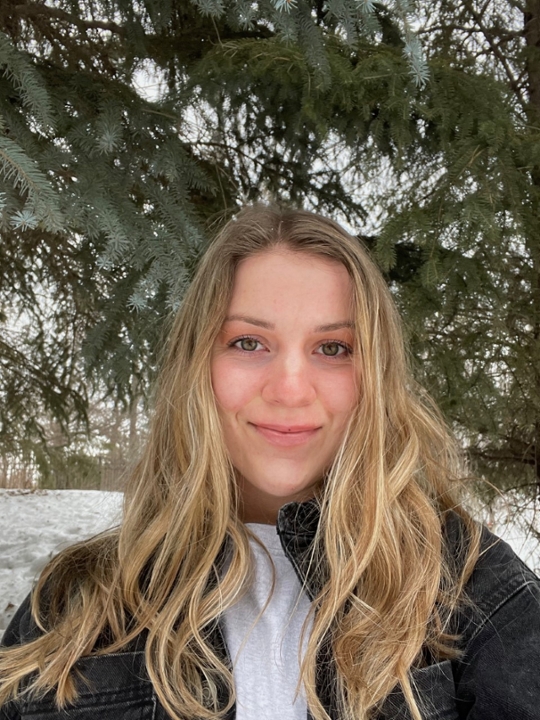USask soil health research helps sustain and expand Indigenous farming operations
Understanding how agricultural practices affect soil health and quality on Indigenous agricultural lands is crucial to the sustainability and resiliency of the land in the face of climate change.
By Brooke KleiboerAn agricultural field work site where soil samples were obtained for the study. (Photo: Cowessess First Nation)

University of Saskatchewan (USask) undergraduate student Stephanie Le Courtois has been an integral part of a soil science research team collaborating with Indigenous communities in Saskatchewan to build strong, evidence-informed farming operations.
The research team is focusing on creating a detailed profile of soil health and quality of lands on the Mistawasis Nêhiyawak and Cowessess First Nations, working in collaboration with their lands departments. The knowledge will be shared with the communities to help with agricultural decisions.
“Agriculture is a huge player in the Saskatchewan economy,” said Le Courtois, who is majoring in Resource Science in the Bachelor of Science in Renewable Resource Management degree program offered by USask’s College of Agriculture and Bioresources.
“Being more informed about soil conditions helps to make more informed decisions regarding best agricultural and land management practices,” she said.
Researchers collected soil samples in the spring and fall from cultivated land, native grassland, and forested regions of both Indigenous communities. The team is conducting lab analysis of these samples to determine soil health after previous agricultural activity in each area. Potential impacts of previous agricultural use include erosion and altered nutrient cycles.
Variables such as the level of carbon present and texture can help determine the amount of water and nutrients the soil can maintain and provides an indicator of its health.
“We collected samples from these different environments to compare the effects of different land uses on soil, contributing to a wholistic understanding of the land. Eventually, it will provide a more thorough documented status of soil characteristics, and therefore health and quality,” said Le Courtois.
The research, supervised and led by USask soil biogeochemist Dr. Melissa Arcand (PhD), aims to collaborate with Indigenous communities to understand the current state of their agricultural lands. Indigenous communities can ultimately use the knowledge to inform agricultural land use decisions, including potential farm expansion or restoration efforts.
The project will provide updated knowledge on important factors such as soil nutrient status, soil carbon, and salinity and form the basis for decisions on farming operations in the next growing season.
“This research can benefit Mistawasis Nêhiyawak and Cowessess because, by working with First Nations land managers, we can increase community awareness of the impacts of agriculture on reserve land. Knowledge about soil conditions helps to make more informed decisions regarding best agricultural and land management practices,” said Le Courtois.
After completing this project, the team hopes to expand on the work by collaborating with Indigenous communities on agricultural issues related to climate change.
“Over the course of my life, I have developed a love and appreciation for the natural world—of its beauty and ability to sustain us,” said Le Courtois. “Saskatchewan and Canada are beautiful and productive places, and I hope to develop a career that works to sustainably manage and protect these natural environments.”
The research is supported by the Canada Tri-Agency New Frontiers in Research Fund’s Exploration Grant program.
This article first ran as part of the 2022 Young Innovators series, an initiative of the USask Research Profile and Impact office in partnership with the Saskatoon StarPhoenix.
Article re-posted on April 19.
View original article.

